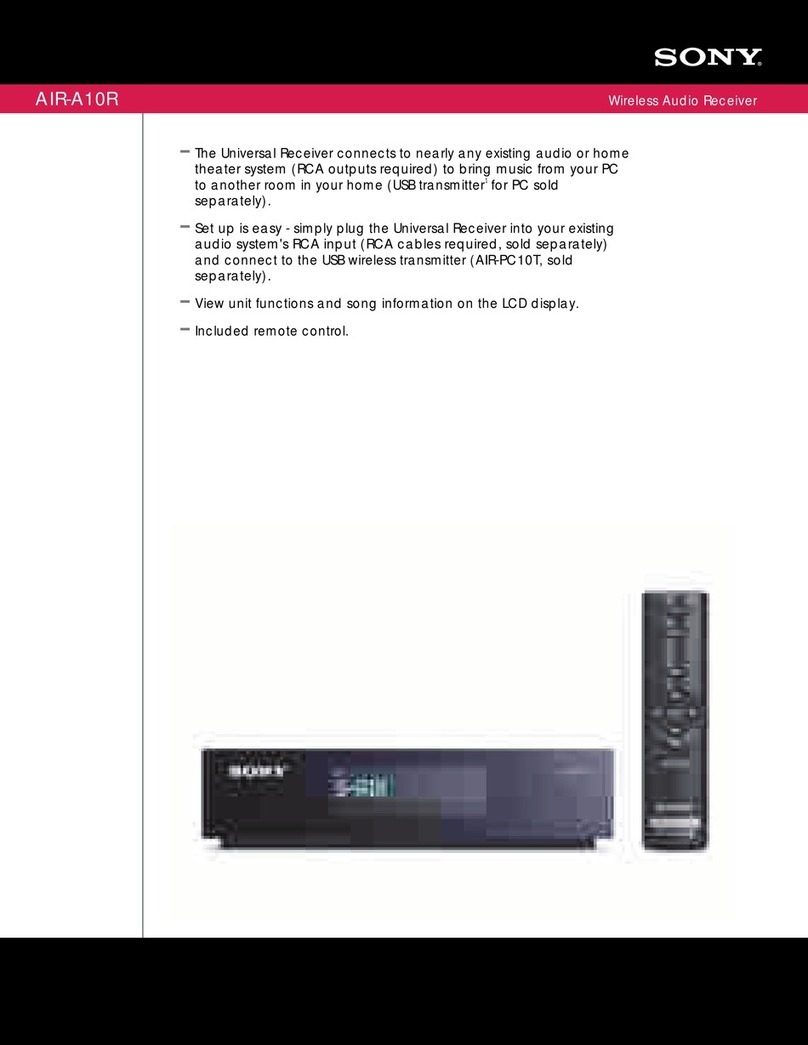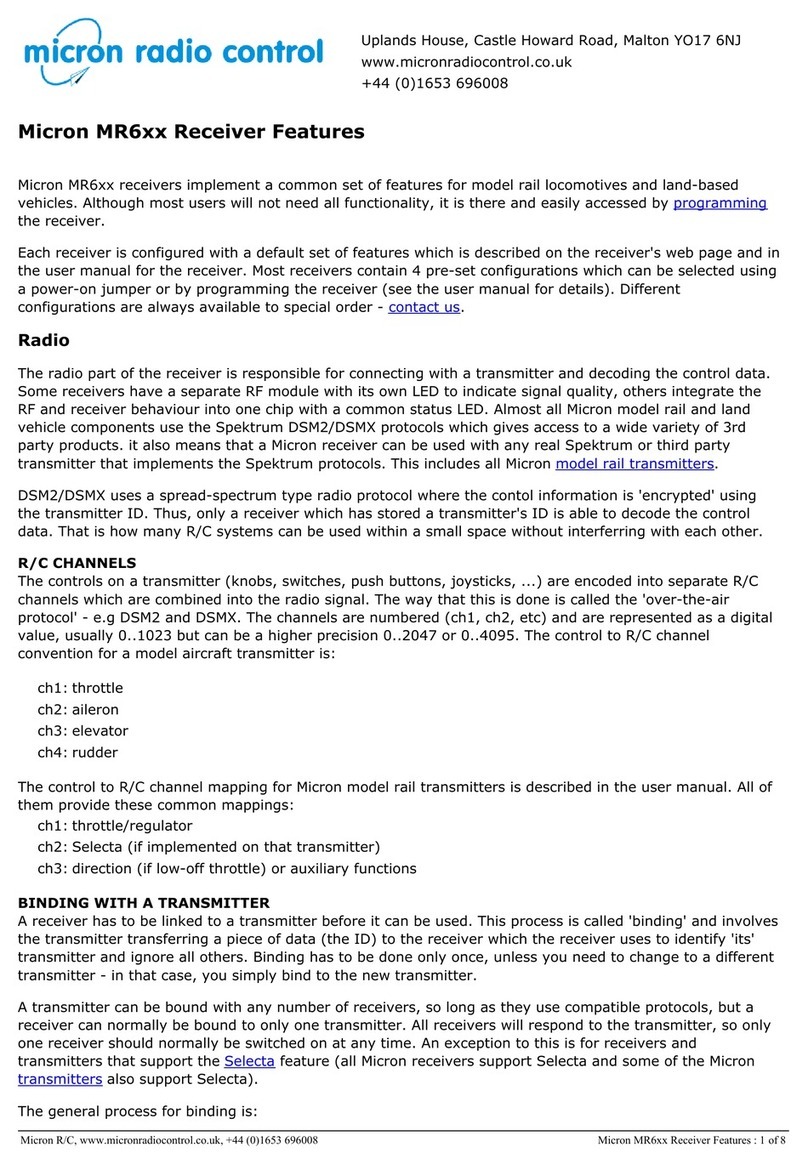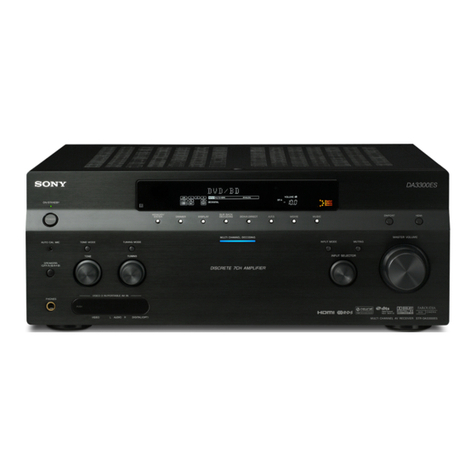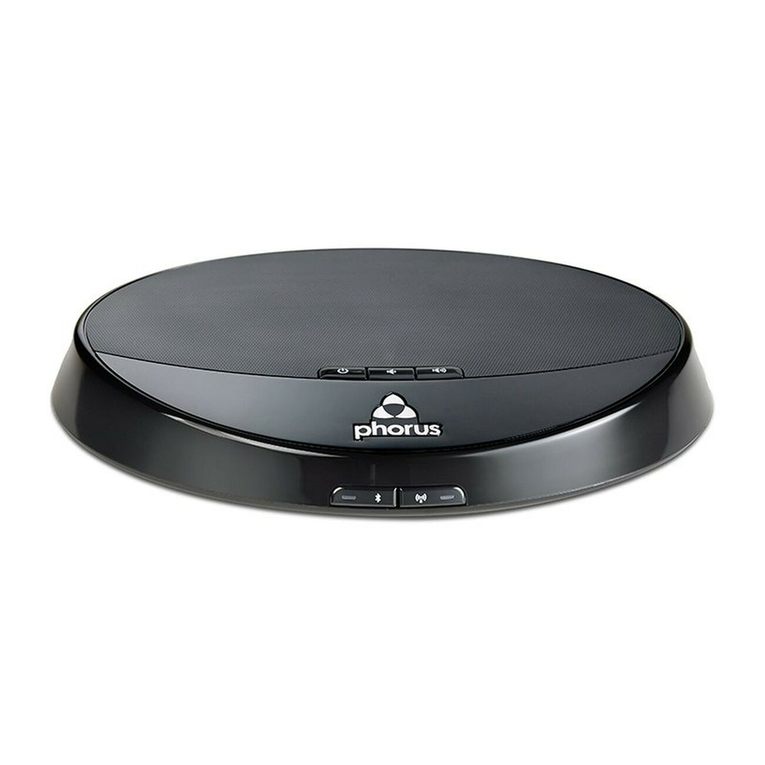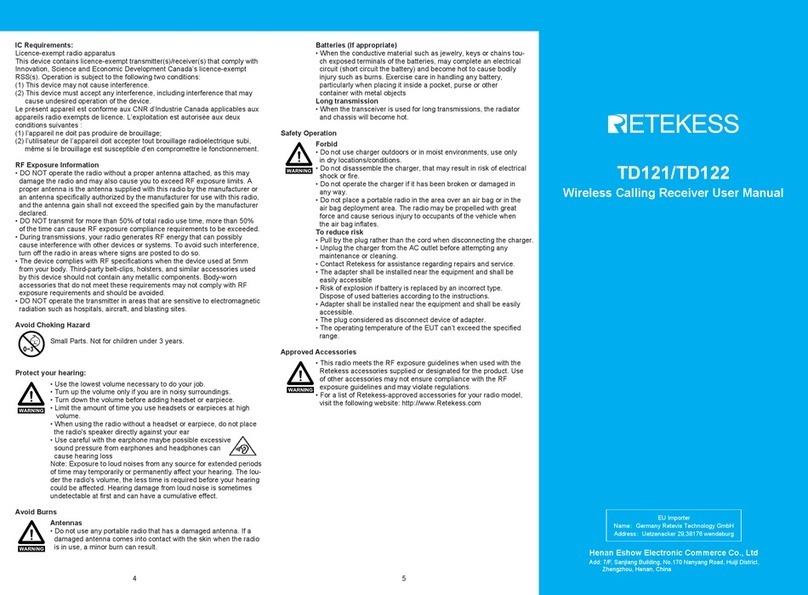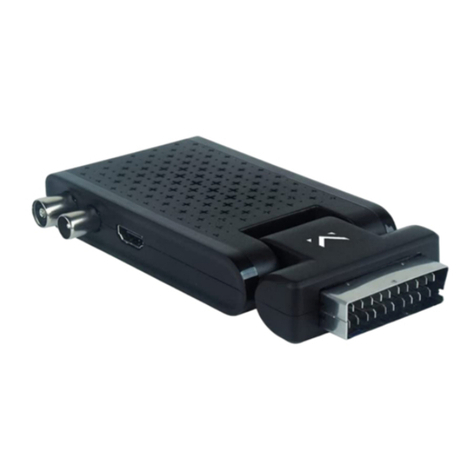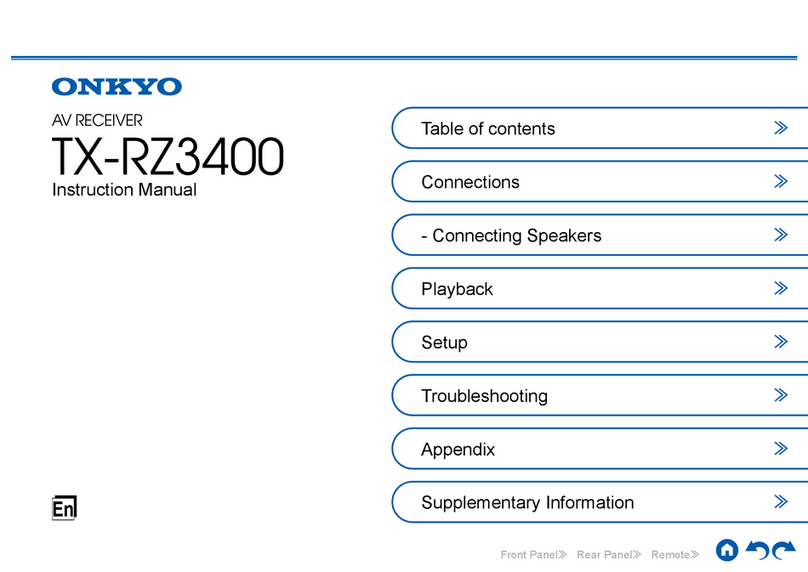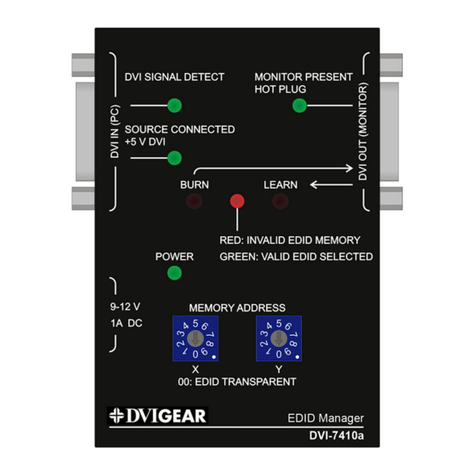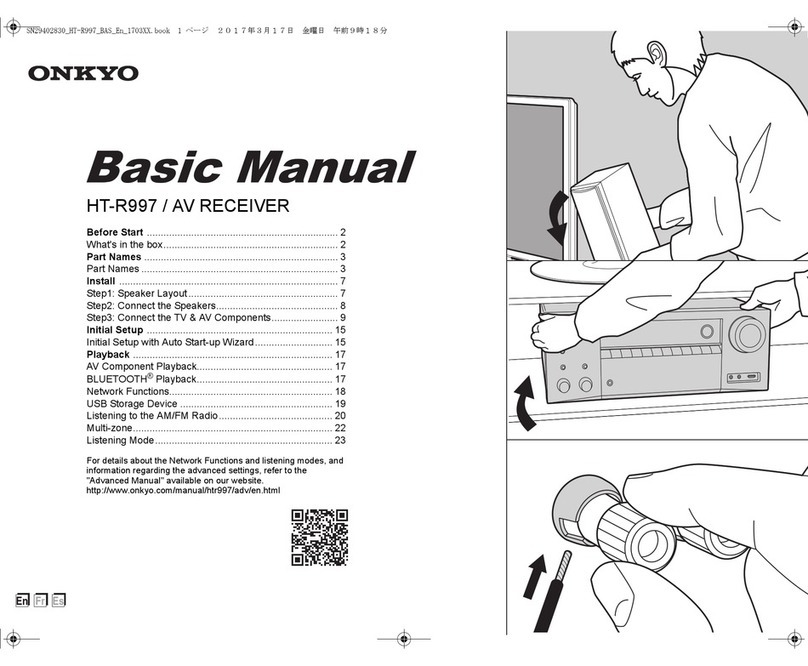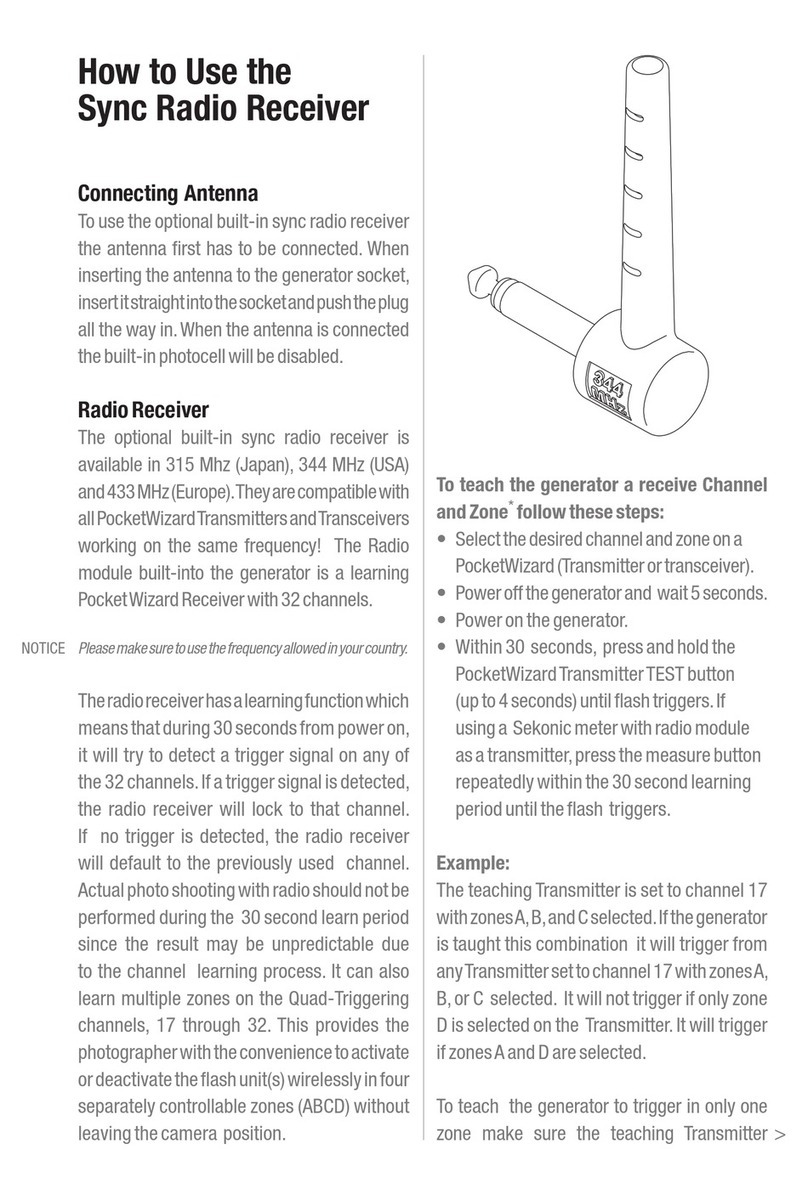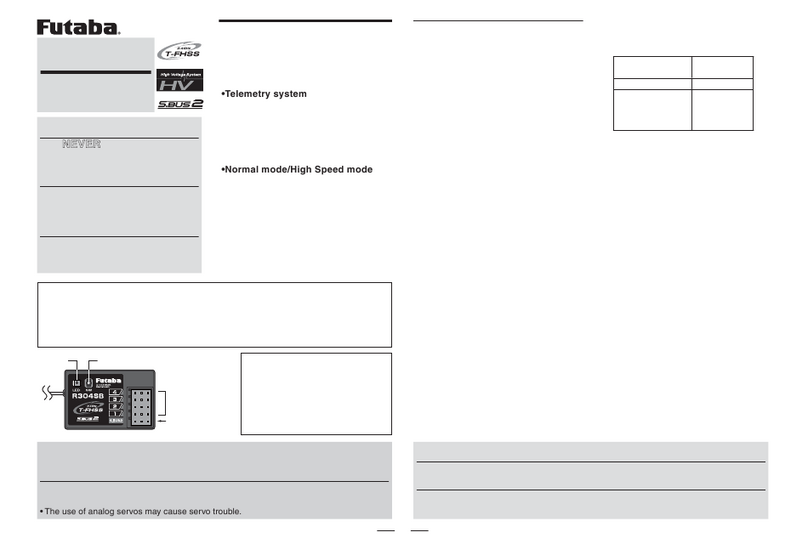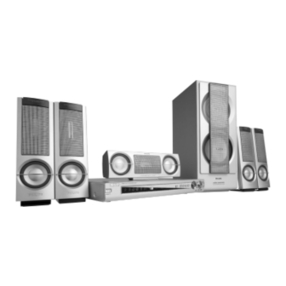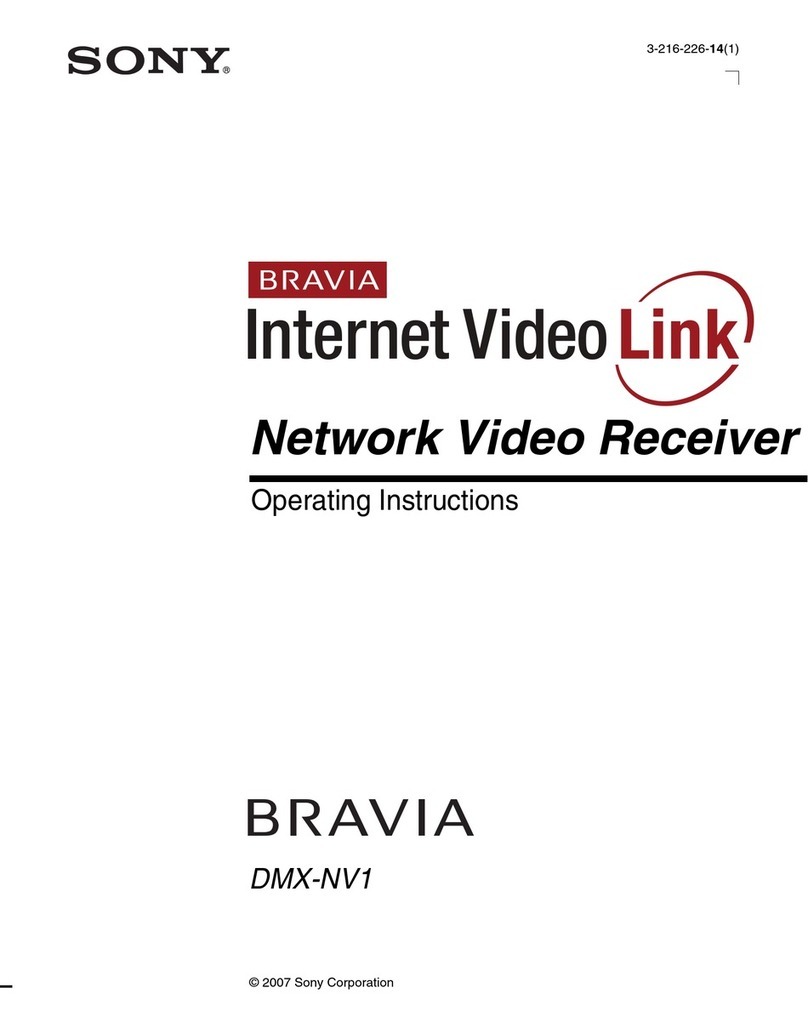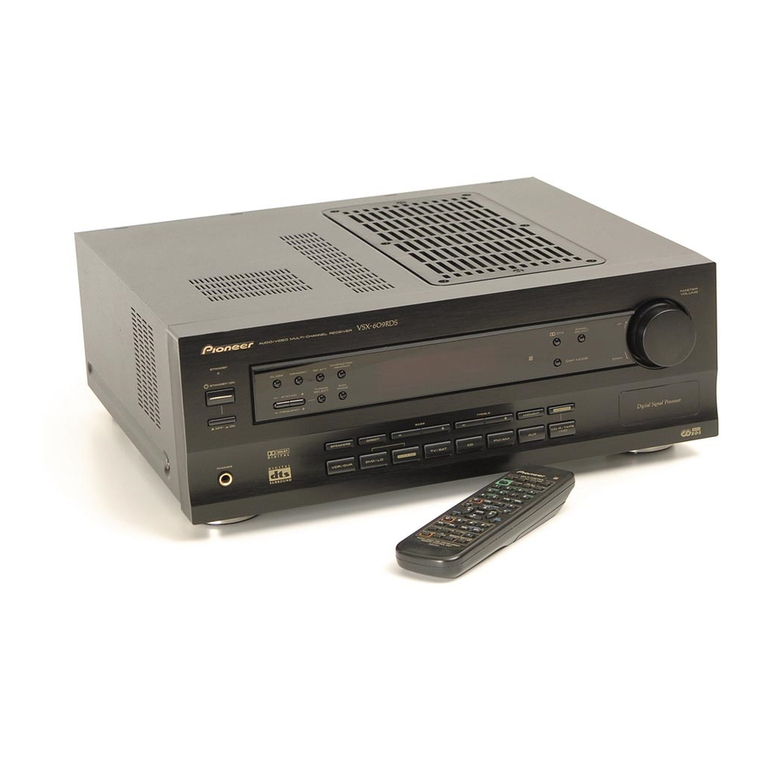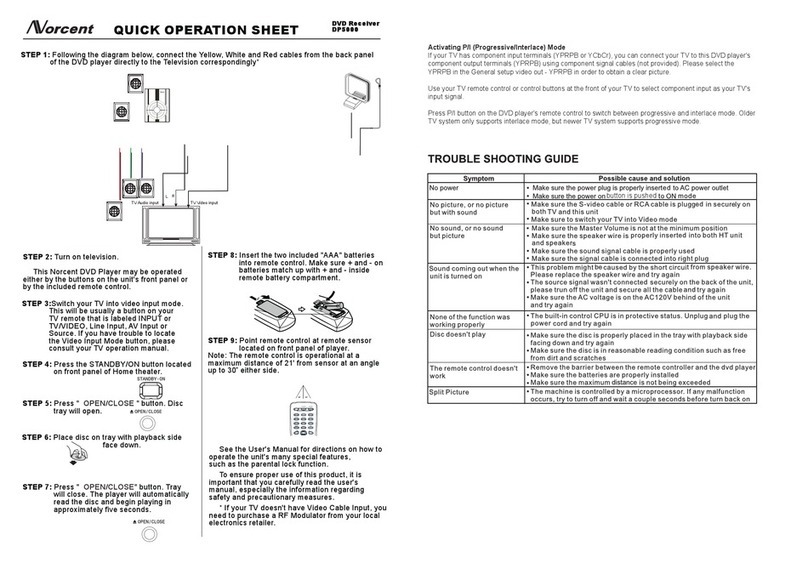Flying Industry Development 0020535 User manual

SHENZHEN GUIYUAN INDUSTRY DEVELOPMENT CO.,LTD
Http://www.carymart.com E-Mail: sale@carymart.com
RF Wireless Receiver (Model 0020535)
Feature:
Wireless control, easy to install
Relay output, can control Lights, Motors, Fans, electrically operated Doors/Locks/Windows/Blinds/Cars or Other Appliances with AC110-240V or DC
0~28V.
You can turn on/off the receiver with transmitter (remote control) from any place within a reliable distance; the wireless RF signal can pass through
walls, floors and doors.
With characteristics of reverse power protection and over current protection
Use an 8-bit microprocessor designed and developed with low-power and high-speed CMOS technology.
Reliable control: The transmitter (Encoding) and the receiver (Decoding) use an 8-bit code.
You can use one transmitter to control several receivers, such as each two buttons on transmitter controls one receiver. They can pair different model
transmitters, includes model CV-4 (500M), CV-6 (500M), CV-8 (500M), CV-12 (500M) and CB-4 (1000M), CB-6 (1000M), CB-8 (1000M), CB-12
(1000M), etc... For example, you can use one 4 buttons transmitter CV-4 or CB-4 to control two receivers, use one 6 buttons transmitter CV-6 or CB-6
to control three receivers, use one 8 buttons transmitter CV-8 or CB-8 to control four receivers, use one 12 buttons transmitter CV-12 or CB-12 to
control six receivers, etc…
Receiver Parameters:
Model No.: S2UB-DC06-ANT2 / S2UB-DC09-ANT2 / S2UB-DC12-ANT2 / S2UB-DC24-ANT2
Power Supply (Operating Voltage): DC6V (S2UB-DC06-ANT2), DC12V±1V (S2UB-DC12-ANT2), DC9V±1V (S2UB-DC09-ANT2), DC24V±2V
(S2UB-DC24-ANT2)
Working Frequency: 315MHz / 433MHz
Channel: 2 CH
Control Modes: Toggle, Momentary, Latched, Momentary + Toggle
Output: Relay output (Normally open and normally closed)
Working Voltage Range of Relay: AC110~240V or DC0~28V
Maximum Working Current of Relay: 10A / each channel
Static Current: ≤6mA
PCB size: 67mm x 50mm x 18mm
Case size: 75mm x 54mm x 27mm
Work with Fixed code transmitters.
External Extend Antenna:
Frequency Range: 300~450MHz
Impedance: 50Ω
Antenna Length: 15cm
Cable Length: 150cm
Weight: 35g
Anti-interference, waterproof, shielded wire set inside
Magnetic stand design for easy to install
Usage (with the transmitter like CV-12 or CB-12):
Connect DC power to terminal “+” and “-“.
Initial state of relay output terminals: Terminals B and C are Normally Open; Terminals A and B are Normally Closed.
Setting different control modes (We have set the receiver as Toggle mode before delivery. If you want to use other modes, do as following):
Setting control mode Toggle: Only connect Jumper-2.
Control mode Toggle: Press -> On; Press again -> Off.
Press button 1: Turn on relay 1 of Receiver 1 (connect B and C, disconnect A and B)
Press button 1 again: Turn off relay 1 of Receiver 1 (disconnect B and C, connect A and B)
Press button 2: Turn on relay 2 of Receiver 1 (connect B and C, disconnect A and B)
Press button 2 again: Turn off relay 2 of Receiver 1 (disconnect B and C, connect A and B)
…
Press button 11: Turn on relay 1 of Receiver 6 (connect B and C, disconnect A and B)
Press button 11 again: Turn off relay 1 of Receiver 6 (disconnect B and C, connect A and B)
Press button 12: Turn on relay 2 of Receiver 6 (connect B and C, disconnect A and B)
Press button 12 again: Turn off relay 2 of Receiver 6 (disconnect B and C, connect A and B)
Setting control mode Momentary: Only connect Jumper-1.
Control mode Momentary: Press and hold -> On; Release -> Off.
Press and hold button 1: Turn on relay 1 of Receiver 1 (connect B and C, disconnect A and B)
Release button 1: Turn off relay 1 of Receiver 1 (disconnect B and C, connect A and B)
Press and hold button 2: Turn on relay 2 of Receiver 1 (connect B and C, disconnect A and B)
Release button 2: Turn off relay 2 of Receiver 1 (disconnect B and C, connect A and B)
…
Press and hold button 11: Turn on relay 1 of Receiver 6 (connect B and C, disconnect A and B)
Release button 11: Turn off relay 1 of Receiver 6 (disconnect B and C, connect A and B)
Press and hold button 12: Turn on relay 2 of Receiver 6 (connect B and C, disconnect A and B)
Release button 12: Turn off relay 2 of Receiver 6 (disconnect B and C, connect A and B)
Setting control mode Latched: Disconnect Jumper-1 and Jumper-2.
Control mode Latched: Press -> On, another relay Off; Press another button -> Off.

SHENZHEN GUIYUAN INDUSTRY DEVELOPMENT CO.,LTD
Http://www.carymart.com E-Mail: sale@carymart.com
Press button 1: Turn on relay 1 of Receiver 1 (connect B and C, disconnect A and B)
Turn off relay 2 of Receiver 1 (disconnect B and C, connect A and B)
Press button 2: Turn on relay 2 of Receiver 1 (connect B and C, disconnect A and B)
Turn off relay 1 of Receiver 1 (disconnect B and C, connect A and B)
…
Press button 11: Turn on relay 1 of Receiver 6 (connect B and C, disconnect A and B)
Turn off relay 2 of Receiver 6 (disconnect B and C, connect A and B)
Press button 12: Turn on relay 2 of Receiver 6 (connect B and C, disconnect A and B)
Turn off relay 1 of Receiver 6 (disconnect B and C, connect A and B)
Setting control mode Momentary + Toggle: Connect Jumper-1 and Jumper-2.
1) Control mode Momentary (Channel 1 of Receiver 1, 2, 3, 4, 5, 6): Press -> On; Press again -> Off.
Press and hold button 1: Turn on relay 1 of Receiver 1 (connect B and C, disconnect A and B)
Release button 1: Turn off relay 1 of Receiver 1 (disconnect B and C, connect A and B)
…
Press and hold button 11: Turn on relay 1 of Receiver 6 (connect B and C, disconnect A and B)
Release button 11: Turn off relay 1 of Receiver 6 (disconnect B and C, connect A and B)
2) Control mode Toggle (Channel 2 of Receiver 1, 2, 3, 4, 5, 6): Press and hold -> On; Release -> Off.
Press button 2: Turn on relay 2 of Receiver 1 (connect B and C, disconnect A and B)
Press button 2 again: Turn off relay 2 of Receiver 1 (disconnect B and C, connect A and B)
…
Press button 12: Turn on relay 2 of Receiver 6 (connect B and C, disconnect A and B)
Press button 12 again: Turn off relay 2 of Receiver 6 (disconnect B and C, connect A and B)
How to pair the transmitter to the receiver:
1) Press the button of receiver; signal LED on the receiver keeps shining. The receiver enters into status of LEARNING.
2) Press button 1, 3, 5, 7, 9 or 11 on remote control. If signal LED flashes quickly 15 times and turns off, it means learning is successful.
3) Receiver 1 learns the transmitter, press button 1 of transmitter.
Receiver 2 learns the transmitter, press button 3.
Receiver 3 learns the transmitter, press button 5.
Receiver 4 learns the transmitter, press button 7.
Receiver 5 learns the transmitter, press button 9.
Receiver 6 learns the transmitter, press button 11.
4) When receiver is in the status of LEARNING, press again the button of receiver, signal LED turns off, learning process will be discontinued.
5) The receiver can learn several remote controls with different codes.
Delete all transmitters:
We have learned remote control to the receiver. If you don’t want the receiver to work with the remote control, you can delete all codes of remote
controls, which are stored in the receiver.
Operation: Press and hold the button of receiver until signal LED flashes slowly; release the button, LED keeps slow flash. That means all stored
codes have been deleted successfully.

SHENZHEN GUIYUAN INDUSTRY DEVELOPMENT CO.,LTD
Http://www.carymart.com E-Mail: sale@carymart.com
Live wire
Neutral wire
_
Control DC Equipment
Jumper-2
Jumper-1
Button
Jumper-2
Jumper-1
Button
Signal LED
Power LED
Antenna
RF module
Antenna
RF module
Power LED
Signal LED
IC
IC
Relay 1
Relay 2
Relay 1
Relay 2
Control AC Equipment
DC0~28V
Power supply
Lamp 1
Lamp 2
_
+
A
B
C
A
B
C
AC110V/120V or AC220V/240V
Power supply
Lamp 1
Lamp 2
_
+
A
B
C
A
B
C
+

SHENZHEN GUIYUAN INDUSTRY DEVELOPMENT CO.,LTD
Http://www.carymart.com E-Mail: sale@carymart.com
12 Buttons 1000M RF Remote Control / Transmitter
Product Description:
Model No.: 0021029 (CB-12)
Shell Color: Grey
Channel/Button: 12
Button Symbol: 1, 2, 3, 4, 5, 6, 7, 8, 9, 10, 11, 12
Operating Voltage: 9V (1 x 6F22 -9V battery, can be used for 12 months)
Operating Current: 30mA
Operating Frequency: 315Mhz / 433Mhz
Encoding Chip: PT2262 / PT2264 / SC2262
Encoding Type: Fixed code by soldering, up to 6561 codes
Transmitting Distance: 1000m / 3000ft (theoretically)
The distance of 1000m is a theoretical data, it shall be operated in an open ground, no barriers, no any interference. But in the practice, it will be
hindered by trees, walls or other constructions, and will be exposed to some interference by other signals. Therefore, the actual distance may or may
not reach 1000m.
If you stretches the telescopic antenna, it can have a further working range, which is twice as much as it used to be.
Modulation Mode: ASK
Operating Temperature: -20 ° C to +70 ° C
Unit Size: 135mm x 42mm x 25mm
Weight: 95g
Uses: garage doors, motorcycles, car alarm products, home security products, wireless remote control products, industrial control products.
How to set up the 8-bits code of the transmitter:
1. Open the transmitter shell, then you will see the circuit board. There are two rows pads and one row of chip feet on the back side.
2. The upper row of pads is “L” side, and the lower row of pads is “H” side.
3. If solder the middle row of chip feet to the “L” side, it is code 1. If solder the middle row of chip feet to the “H” side, it is code 2. Don’t solder to any
side, it is code 0.
4. The 8-bits code order is from left to right (from A1 to A8).
5. Here is an example, the 8-bits code in the picture is 00010121, solder as the following way:
6. Code 0: don’t solder any side, like A1、A2、A3、A5.
7. Code 1: solder to the “L” side, like A4、A6、A8.
8. Code 2: solder to the “H” side, like A7.
This manual suits for next models
4
Table of contents
Other Flying Industry Development Receiver manuals

Flying Industry Development
Flying Industry Development S2UW-AC-ANT3 User manual

Flying Industry Development
Flying Industry Development 0020670 User manual

Flying Industry Development
Flying Industry Development 0020112 User manual

Flying Industry Development
Flying Industry Development S2UA-DC12 User manual

Flying Industry Development
Flying Industry Development S2UW-DC-ANT3 User manual
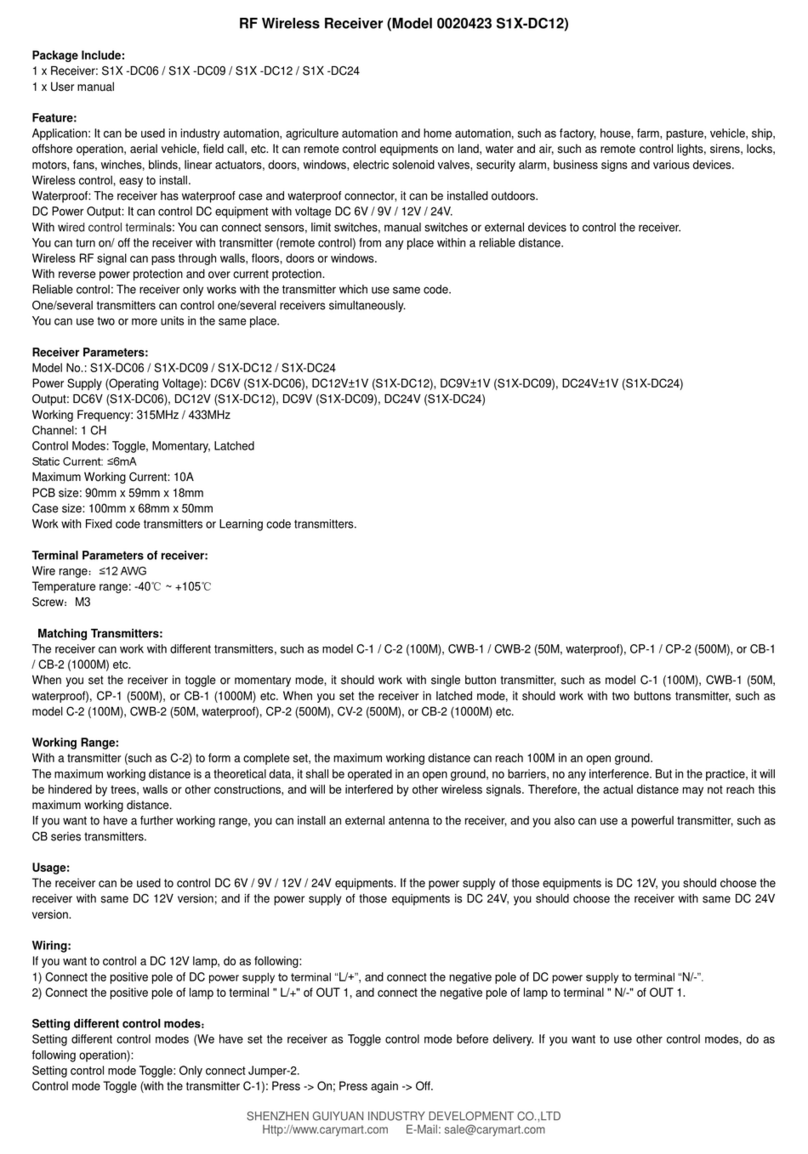
Flying Industry Development
Flying Industry Development 0020423 User manual
